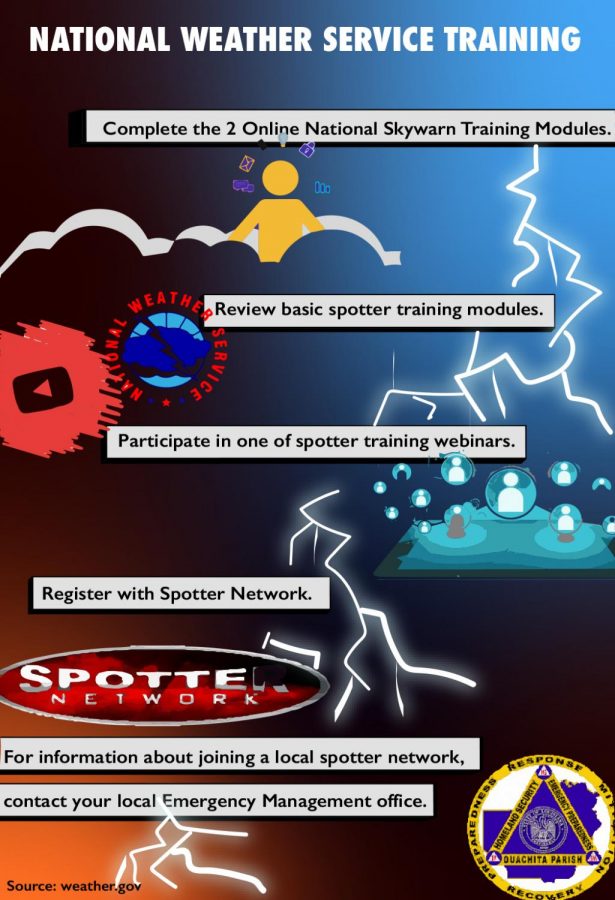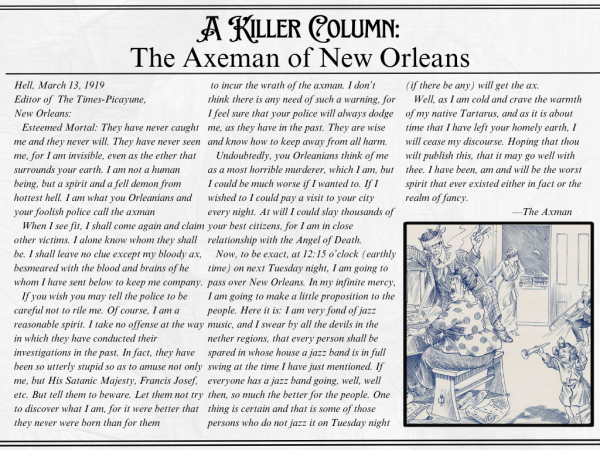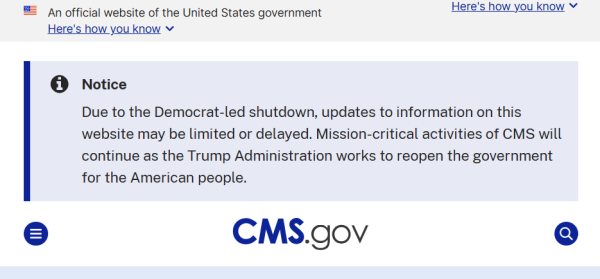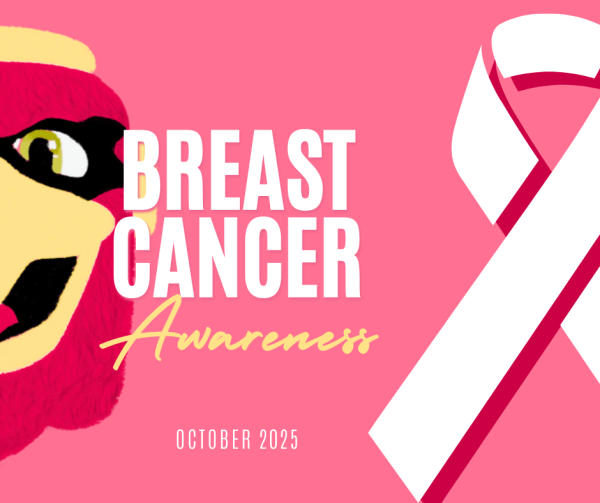Severe weather training held on campus
In April 2019, a deadly tornado tore through Ruston. The tornado killed two people and destroyed parts of the city as well as the Louisiana Tech campus.
Because of tragedies like this, it is important that people be aware not only of the dangers of severe weather, but of what to do when it hits your area. For this reason, ULM has held National Weather Service SKYWARN spotter training courses twice a year for the past 10 years.
This year, the event was held at the University Police Department on Oct. 1.
The speaker at the course was Matthew Duplantis, the lead meteorologist for the NWS in Shreveport. Duplantis taught the small group of attendees in two hours what types of severe weather situations to report, how to report them and who to report them to.
Weather that should be reported includes tornadoes, funnel clouds, hail, flooding and really anything else that you feel is important to report. However, there are some fundamental facts about these types of weather that everybody should be aware of if they are going to spot and report.
Tornadoes are a common occurrence in this part of the country, but their peak seasons are March, April and May. Funnel clouds are indicators of tornadoes. They look just like tornadoes, but have not yet touched the ground.
They also tend to come from the southwest direction. So, it wouldn’t be the best idea to go into the southwest corner of your house during a tornado. Actually, whatever building you are in, you should always go to the center of the building on the lowest floor, according to Duplantis.
“You’ve got to know your geography,” Duplantis said.
If you know your surroundings, you can try to get out of the tornado’s path no matter where you are.
When there is a green tint in the sky, that indicates hail. It is important to know that hail does not do any real damage unless it is at least one inch in diameter.
When you call in to report hail, you should know the correct way to describe its size. A quick Google search will give you the hail size description chart so you know whether the hail is the size of a dime, golf ball or something else. Whatever you do, do not say that the hail is “marble-sized.” Marbles come in all sizes and this can cause confusion.
Strong winds are not extremely common in the southern United States, but the most important fact to know is that they start causing real damage when they hit 58 mph.
Wind can destroy buildings and tear trees apart. It is important that strong winds are reported, but you should also never go out if the wind is blowing too hard because you could be injured by flying debris.
As a spotter, you should never put yourself in any kind of danger, even though it is important to report the weather. Evan Stone, the assistant director of facilities and event management and athletics, said that the most useful thing he learned was “being able to spot severe weather on the ground.”
If you are going to spot storms, you should know where you are, where the storm is and the direction that the storm is moving in. You should also be careful to not get close and always keep a buffer zone between yourself and the storm.
That being said, you should always report what you can. You can report weather-related information by calling your local weather station, NWS station or the NWS website. You should keep the report brief, be able to give your exact location and say what you saw and when you saw it.
After the class, Chance Markham, a freshman pre-radiologic technology major, was glad he participated in the course.
“I feel like now I’ll be more prepared and know what to do during bad storms,” said Markham.
Spotters are an integral part of weather reporting and are always needed and appreciated.
Any concerned individual can become a trained spotter by taking an NWS training course like this one. Classes do not happen often though, so you can also take the course online at the NWS’s website to become a trained spotter.







